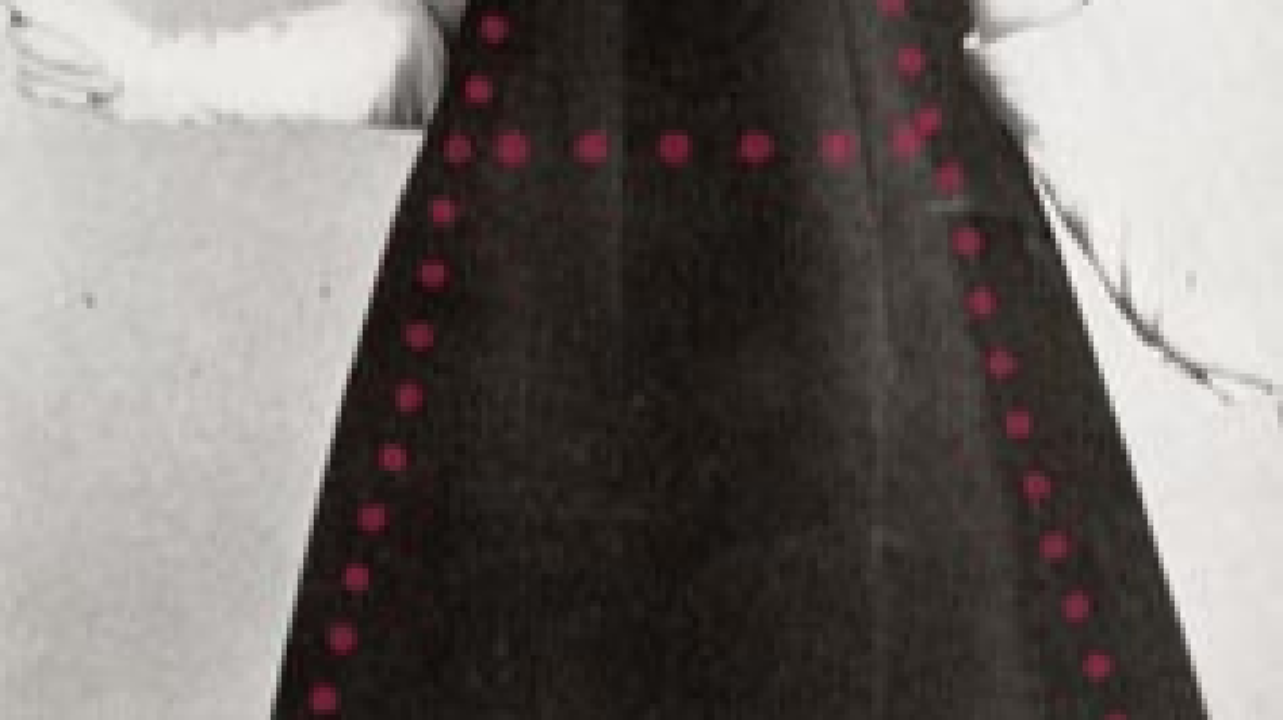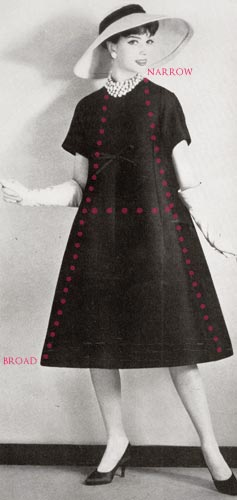AllVintageStyles
The Ultimate Vintage Fashion Encyclopedia
A-Line Dress


Fitted bodice dress that flares into triangular A-shaped skirt, epitomizing 1960s mod fashion and youthful liberation from restrictive clothing.
Quick Facts
- Era: 1960s (peak popularity 1960s-1970s)
- Origin: France/Britain (Christian Dior's creation, adopted by mod culture)
- Garment Type: Youth-oriented dress with geometric silhouette
- Key Identifiers: Fitted bodice, A-shaped flared skirt, mini or knee-length, simple construction
- Typical Resale Price: $35-$200 (authentic vintage pieces)
- Best For: Mod fashion collectors, 1960s youth culture enthusiasts, geometric silhouette seekers
History & Evolution
A-line dresses originated in 1955 when Christian Dior created the revolutionary silhouette that challenged post-war New Look fullness with geometric simplicity. Dior's A-line represented modernist design principles applied to fashion, creating clean architectural lines that emphasized youthful movement over traditional feminine curves. The style initially appeared in haute couture collections before influencing ready-to-wear fashion throughout the late 1950s.
The 1960s transformed A-line dresses into symbols of youth rebellion and mod culture when London designers like Mary Quant adapted the silhouette for teenage markets. The geometric shape perfectly suited mini-skirt proportions and represented rejection of adult feminine conventions, appealing to young women seeking fashion that matched their liberated lifestyles. Carnaby Street boutiques and mod fashion made A-line dresses essential uniforms for swinging sixties culture.
The late 1960s and early 1970s saw A-line construction become mainstream fashion while maintaining associations with youth and modernity. The silhouette's versatility allowed adaptation across various style movements from preppy to bohemian, though mod connections remained strongest. Contemporary fashion continues A-line traditions with updated fabrics and proportions, but vintage pieces offer superior construction quality and authentic 1960s proportional relationships reflecting original mod fashion intentions.
Authentication Tips
Authentic 1960s-1970s Features:
- Quality cotton, wool, or structured synthetic fabrics with proper weight and body
- Metal side or back zippers with substantial construction and smooth operation
- Simple construction with minimal darts and clean geometric lines
- Period-appropriate mod colors including bold solids and geometric patterns
- Professional finishing with bound seams and quality construction details
Common Reproductions/Modern Pieces:
- Lightweight synthetic fabrics with poor structure inappropriate for authentic A-line shape
- Plastic zippers or modern closure systems not available during 1960s production
- Overly fitted or complex construction lacking authentic mod simplicity
- Contemporary prints or colors not available during vintage mod fashion periods
- Simplified finishing without authentic professional dress construction techniques
Styling & Use Cases
- Best for mod enthusiasts: Pair with go-go boots and geometric accessories for authentic 1960s London styling
- Ideal for youth culture collectors: Combine with shift accessories and bold jewelry for swinging sixties presentation
- Perfect for geometric fashion: Layer with structured coats or wear alone for clean architectural silhouettes
Modern styling tips:
- Embrace the dress's youthful proportions by choosing accessories that maintain mod-inspired simplicity
- Layer with period-appropriate outerwear like car coats or mod jackets for authentic 1960s styling
- Focus on bold, geometric accessories that complement the dress's architectural silhouette
FAQ
Q: How can I tell if an A-line dress is authentic 1960s mod construction?
A: Check for quality cotton or wool fabrics with proper structure, metal zippers with substantial construction, simple geometric construction with minimal darts, period-appropriate mod colors and patterns, and professional finishing typical of authentic 1960s dress manufacturing.
Q: What's the typical price range for vintage A-line dresses?
A: Authentic vintage A-line dresses range from $35-200 depending on designer label, fabric quality, and condition. Documented mod pieces or designer examples command higher prices among 1960s fashion and youth culture collectors.
Q: How should I care for a vintage A-line dress?
A: Machine wash cotton pieces on gentle cycle or dry clean wool versions, store on hangers to maintain A-line shape, and avoid alterations that could compromise the geometric silhouette and mod proportions.
Q: What makes vintage A-line dresses valuable to collectors?
A: Cultural significance in 1960s mod fashion and youth liberation movements, superior construction quality representing authentic geometric design principles, connection to influential designers like Christian Dior and Mary Quant, and documentation of swinging sixties style revolution that influenced global fashion trends.
📷: Vintage Vixen Clothing
